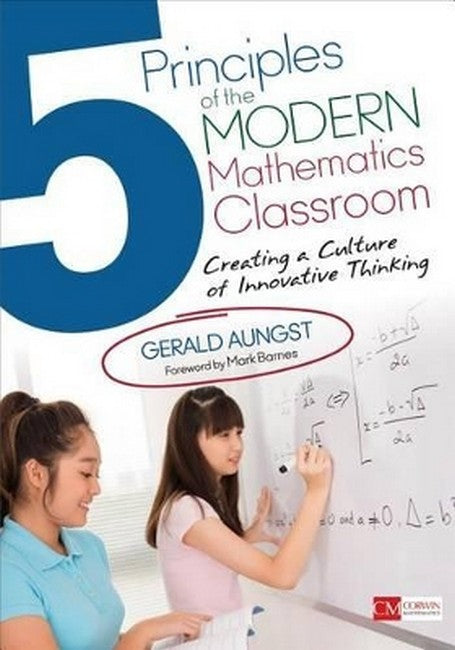Foreword by Mark Barnes Preface Acknowledgements About the Author Chapter 1. Math for the 21st Century and Beyond Mathematics as Literacy Mathematics as an Innovation Incubator Goals of This Book What Else to Expect For PLC and Study Groups Chapter 2. Classroom Environment: A Medium for Change Why Classroom Culture? Depth and Rigor A Focus on the Practices The 5 Principles of the Modern Mathematics Classroom For PLC and Study Groups Chapter 3. Conjecture The Power of Mysteries The Curious Brain Problem Solving Is a Cycle, Not a Recipe Grades K-3 Grades 2-5 Grades 4-7 Grades 6-9 Grades 8-12 Technology Integration for Conjecture: Case Studies For PLC and Study Groups Chapter 4. Communication The Mysterious Mathemagical Mind Trick First and Foremost, Communicate Six Levels of Mastery Grades K-3 Grades 2-5 Grades 4-7 Grades 6-9 Grades 8-12 Technology Integration for Communication: Case Study For PLC and Study Groups Chapter 5. Collaboration But, Isn't That Cheating? Recognizing, Defining, and Representing Problems Grades K-3 Grades 2-5 Grades 4-7 Grades 8-12 Grades 6-9 Technology Integration for Collaboration: Case Study For PLC and Study Groups Chapter 6. Chaos Features of Effective Math Instruction Disorganized Chaos Productive Struggle Grades K-3 Grades 2-5 Grades 4-7 Grades 6-9 Grades 8-12 Technology Integration for Chaos: Case Studies For PLC and Study Groups Chapter 7. Celebration Today, We Celebrate Cautions About Celebration Grades K-3 Grades 2-5 Grades 4-7 Grades 6-9 Grades 8-12 Digital Tools and Resources for Celebration Technology Integration for Celebration: Case Study For PLC and Study Groups Chapter 8. Becoming a Problem-Solving Classroom Transformation Is Possible Self-Assessment Goal-Setting and Planning Maintaining Your Momentum Appendix: Digital Tools References Index
Creating a math classroom filled with confident problem solvers starts by introducing challenges discovered in the real world, not by presenting a sequence of prescribed problems, says Gerald Aungst. In this groundbreaking book, Aungst offers a thoughtful approach for instilling a culture of learning in your classroom through five powerful, yet straightforward principles: Conjecture, Collaboration, Communication, Chaos, and Celebration.
Gerald Aungst has nearly 30 years experience as a professional educator, specializing in design thinking, computer science, mathematics, gifted education, and digital technology. In his various roles as a classroom teacher, gifted support specialist, administrator, curriculum designer, and professional developer, he has worked to create a rich and vibrant learning culture. Gerald is a founder of AllAboutExplorers.com and GamifyED.net. Since 2016, Gerald has served as the gifted support and STEM teacher at Cheltenham Elementary School in the Cheltenham School District, Pennsylvania. He led the development and launch of the school's makerspace, and worked on the team developing the district's K-12 computer science curriculum. Gerald is also an adjunct faculty member at Holy Family University in Philadelphia and the University of Iowa. An experienced speaker, Mr. Aungst gave the keynote address at the 2016 EIRC Gifted and Talented Learning Fair. He was also a member of the keynote panel and a featured presenter at Digital Learning Day 2013. He has presented on a wide range of topics including curiosity, makerspaces, and gamification at many regional and national conferences, including ISTE, Educon, NAGC, PCTM, PETE&C, ITEC, FETC, and Carnegie-Mellon University. Gerald holds a bachelor's degree from Penn State University and a master of education degree from Widener University. You can find him on Twitter at @geraldaungst and on the web at www.geraldaungst.com.

